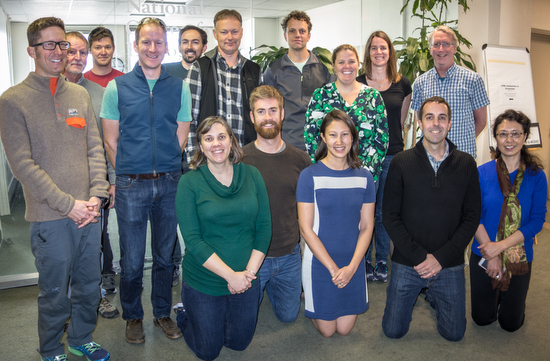LTER: Integrating plant community and ecosystem responses to chronic global change drivers: Toward an explanation of patterns and improved global predictions
Project Description
Many global change drivers, such as increasing air and soil temperatures or increased concentrations of carbon dioxide, lead to chronic alterations in resource availability. Scientists anticipate that the magnitude and direction of ecosystem responses to these changes will be non-linear. To predict responses to GCDs across a wide variety of ecosystems, the working group is taking advantage of 101 similar experiments done across 17 LTER sites, all of which have examined plant community responses to changes in resource availability. The group aims to discover whether changes in plant community structure, productivity, and carbon storage are predictive of shifts in ecosystem function.

Principal Investigator(s)
Project Dates
Start: September 1, 2016
End: January 30, 2019
completed
Participants
- Meghan L. Avolio
- Johns Hopkins University
- William D. Bowman
- University of Colorado
- Ethan Butler
- University of Minnesota
- Scott L. Collins
- University of New Mexico
- Jeffrey S. Dukes
- Purdue University
- Emily Grman
- East Michigan University
- Gregory R. Houseman
- Wichita State University
- Forest Isbell
- University of Minnesota
- David S. Johnson
- Virginia Institute of Marine Science
- Trevor F. Keenan
- Lawrence Berkeley National Laboratory
- Nancy Y. Kiang
- National Aeronautics and Space Administration (NASA)
- Alan K. Knapp
- Colorado State University
- Sally E. Koerner
- University of North Carolina, Greensboro
- Kimberly J. Komatsu
- Smithsonian Environmental Research Center
- Lara M. Kueppers
- Lawrence Berkeley National Laboratory
- Adam Langley
- Villanova University
- Nathan Lemoine
- Colorado State University
- Michael E. Loik
- University of California, Santa Cruz
- Christopher J. Lortie
- York University
- Yiqi Luo
- University of Oklahoma
- Brian J. McGill
- University of Maine
- Paul Moorcroft
- Harvard University
- Ben Poulter
- National Aeronautics and Space Administration (NASA)
- Peter B. Reich
- University of Minnesota, Twin Cities
- Katherine Renwick
- Montana State University
- Osvaldo E. Sala
- Brown University
- Jackie Shuman
- University Corporation for Atmospheric Research
- Melinda D. Smith
- Colorado State University
- Andrew Tredennick
- Utah State University
- Anthony P. Walker
- Oak Ridge National Laboratory
- Ensheng Weng
- University of Oklahoma
- Kevin R. Wilcox
- USDA Agricultural Research Service (ARS)
- Yang Xia
- Long Term Ecological Research (LTER)/Network Office (NET/LNO)
Products
-
Journal Article / 2019
A comprehensive approach to analyzing community dynamics using rank abundance curves
-
Journal Article / 2021
Determinants of community compositional change are equally affected by global change
-
Data Set / 2019
Codyn R Package: Community Dynamics Metrics
-
Presentations / 2018
Building capacity for increased interactions between modelers and empiricists
-
Journal Article / 2019
Global change effects on plant communities are magnified by time and the number of global change factors imposed
-
Journal Article / 2018
Ambient changes exceed treatment effects on plant species abundance in global change experiments
-
Journal Article / 2021
Do trade-offs govern plant species' responses to different global change treatments?
-
Journal Article / 2017
Asynchrony among local communities stabilises ecosystem function of metacommunities
-
Journal Article / 2021
Shrub density effects on the community structure and composition of a desert animal community
